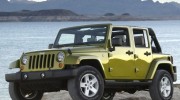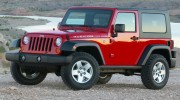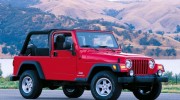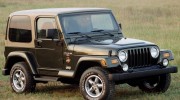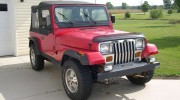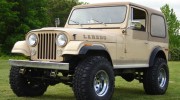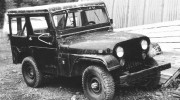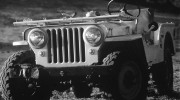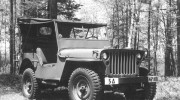History of the Jeep Wrangler (1940-2010)
Posted By The Editor On May 17, 2009 @ 10:10 am In Feature Stories,Features | 1 Comment
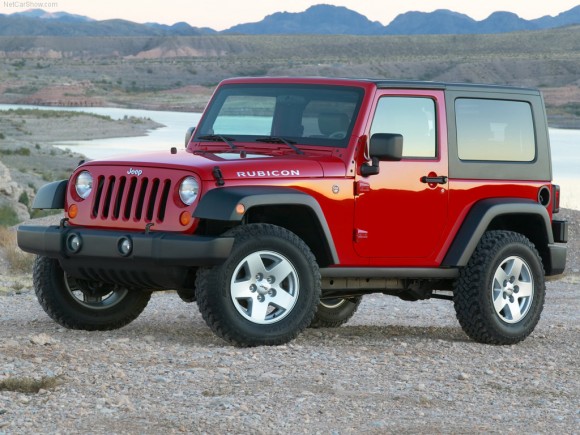
The Jeep Wrangler is one of the most recognizable vehicles on the planet. Anyone can spot one from a mile away, and the original idea has even been historically copied the world over by the British, the Japanese and the Indians. Of course, when it made its mark internationally, it wasn’t even called a Wrangler. Or Jeep, for that matter.
During what was just the beginning of World War 2, the United States military wanted a generic new vehicle to replace its fleet of aging motorcycles and civilian-converted vehicles. So in 1939, they invited as many as 135 different automotive companies to compete for a contract to build a new vehicle for the military. The vehicle had to meet certain specs, such as a payload capacity of 600 lbs, a wheelbase under 75 inches, a fold-down windshield, a gross vehicle weight of under 1200lbs, and mandatory four-wheel drive. Only three companies entered, namely Bantam, Willys-Overland, and Ford.
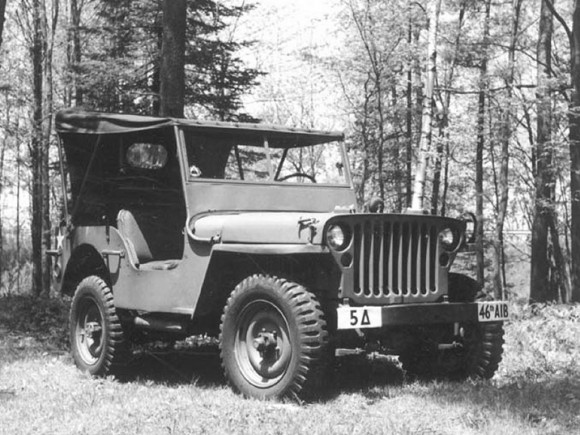
By 1940, Bantam had a working prototype called the Bantam Blitzbuggy. Willys-Overland came up with the Willys Quad, while Ford created the Ford Pygmy, which were basically clones of the Bantam car. Willys eventually won the contract because of their 60 hp “Go-Devil” engine, but Ford was also given a contract to build additional vehicles to keep up with the military’s enormous WW2 demands. Willys later renamed their vehicles the MA and the MB, while Ford called theirs the GP and the GPW. Eventually they were all known as Jeeps.
No one actually knows where the “Jeep” name came from. Some people believe that it evolved from the Ford ‘GP’ designation, which many think stood for “general purpose.” In reality, “G” stood for Government and the “P” was a random designation for the vehicle class that included 80-inch wheelbase 4×4 quarter-ton trucks.
In 1942, Ford built a limited number of amphibious Jeeps, known as the Seep. This little vehicle was basically a Willys MB with a boat tub on the bottom and included cutouts for the wheels as well as a propeller. These were best for crossing rivers and lakes, but not marine warfare.
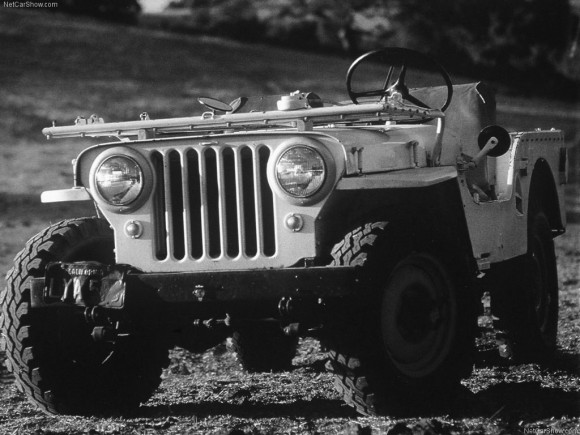
The civilian CJ series began back in 1945 with the CJ2A. In fact, “CJ” supposedly stood for “Civilian Jeep.” Next came the CJ3A and the CJ3B models, which were produced until 1968. These early Jeeps are commonly referred to as “flatfenders” because their non-protruding front fenders were flat across the front and inline with the grille. There was also a single 1951 CJ-4 prototype that provided the basis for the first round-fender CJ-5 under a company called Kaiser.
The CJ-5 debuted in 1954 as a civilian version of the military’s 1952 M-38A1. The CJ-5 stayed in production for almost 30 years, longer than any other Jeep model, and was finally taken out of production in 1983. During this time, there were also limited-production military and civilian CJ-6 models with a 101-inch wheelbase and later a 104-inch wheelbase. The Jeep nameplate was owned by AMC by the mid-1960s, taking over from Kaiser’s mismanagement.
In 1956, Jeep began making the 2WD Postal/Dispatch Jeep, known as the DJ. The DJ-3A was the first Postal Jeep and was a flat fender Jeep similar to the CJ-3A, but only with two-wheel-drive. In 1965, the DJ-5 came into being, which is the postal Jeep most people are familiar with today. The DJ-5 continued under Jeep well into the early 1970s, and production later continued under AM General, makers of the Humvee.
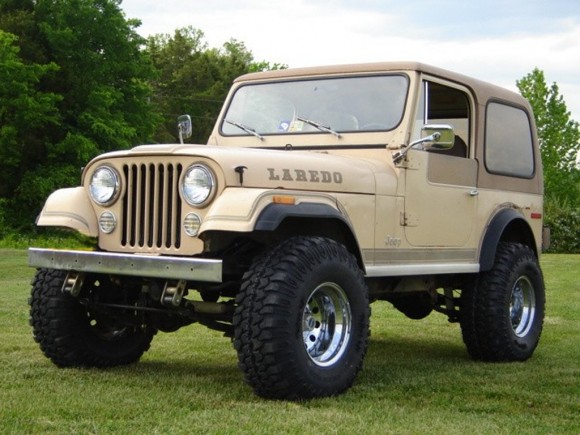
The “new” CJ-7 debuted 1976, in what was the start of a 10-year run. The CJ-7 has a longer wheelbase than the CJ-5 to accommodate an optional automatic transmission. Between 1981 and 1986, Jeep made a long-wheelbase CJ-8 pickup called the Scrambler, derived from the CJ-7.
In 1987, the CJ-7 was replaced with the YJ, better known the Wrangler. It was the only Wrangler generation to feature rectangular headlights. There were three different engine options that included a 2.0L, a 4.0L and a 4.2L as well as four different transmission options. It had a solid 10-year shelf-life, and later Wrangler models were more or less variations of the theme set by the YJ. Somewhere along the way, Chrysler bought out AMC and retained the Jeep brand as well as its models.
The next Wrangler, known as the TJ, debuted in 1997, bringing back the classic round headlights, while adding comparatively-modern features such as dual airbags, a redesigned interior, and an all-new “Quadra-Coil” suspension instead of leaf-springs. It was offered with three different engines, including a 2.4L, a 4.0L, and a 2.5L motor. The TJ got some minor upgrades in 2003, at which point the Rubicon edition joined the line-up. The Rubicon featured D44 axles front and rear with manual air-lockers, a NV241J “RockTrac” transfer case with a 4:1 low range, rear disc brakes instead of drums, and diamond plate rocker guards. Another addition to the TJ line was a new 4-speed automatic transmission to replace the previous 3-speed version. At the start of the millenium, Chrysler merged with Mercedes-Benz to become DaimlerChrysler, but Jeep thankfully remained unaffected.
In 2004, the Jeep Wrangler Unlimited debuted, internally known as the LJ. The LJ was based on the existing TJ platform, but featured a 104-inch wheelbase for increased cargo room. Standard features on the LJ included the 4.0L inline-6 engine and a D44 rear axle. The LJ eventually came with either a new 4-speed automatic or a 6-speed manual transmission. The new 6-speed manual, which only debuted in 2005, also became available on the regular TJ. In 2005 Jeep added a Rubicon edition of the LJ as well as an “upscale” Limited model with a chrome grille.
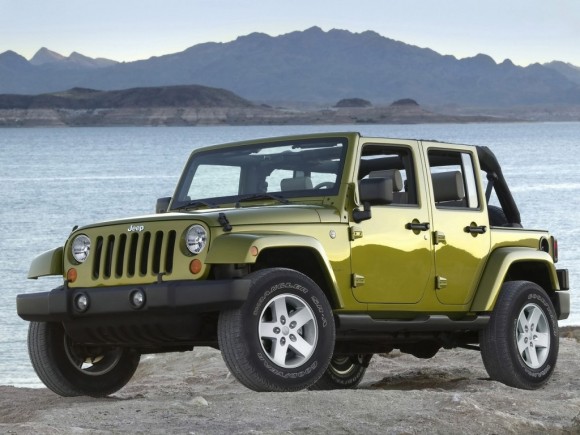
The KJ is designation for the newest Wrangler yet, debuting as a 2007 model. Instead of just a soft-top and a hard-top two-door version, the KJ now features two-door and four-door models, all with a hard-top roof that can be removed and stored as separate panels. The four-door is called the Unlimited, while the Rubicon comes as a two-door model. The current engine is a 3.6L V6 with either a 4-speed automatic or a 6-speed manual transmission. By the time it was launched, Chrysler was an independent company again, under the ownership of investment firm Cerberus until its bankruptcy in 2009.
The Wrangler is one of few vehicles that have stood the test of time. While many considered the Wrangler strictly as an off-road type vehicle in the past, it is now trying to appeal to a wider range of consumers, while also attempting to retain the capabilities that made it a legend in the first place.
Article printed from ModernOffroader.com USA : SUV / Crossover / Truck / Hybrid: https://www.modernoffroader.com
URL to article: https://www.modernoffroader.com/history-of-the-jeep-wrangler-1940-2010/488/
URLs in this post:
[1] Image: https://www.modernoffroader.com/history-of-the-jeep-wrangler-1940-2010/488/jeep-wrangler-unlimited-2007/
[2] Image: https://www.modernoffroader.com/history-of-the-jeep-wrangler-1940-2010/488/jeep-wrangler-2007/
[3] Image: https://www.modernoffroader.com/history-of-the-jeep-wrangler-1940-2010/488/jeep-wrangler-2004-unlimited/
[4] Image: https://www.modernoffroader.com/history-of-the-jeep-wrangler-1940-2010/488/jeep-wrangler-1997/
[5] Image: https://www.modernoffroader.com/history-of-the-jeep-wrangler-1940-2010/488/jeep-wrangler-1987/
[6] Image: https://www.modernoffroader.com/history-of-the-jeep-wrangler-1940-2010/488/jeep-cj7-1976/
[7] Image: https://www.modernoffroader.com/history-of-the-jeep-wrangler-1940-2010/488/jeep-cj5-1954/
[8] Image: https://www.modernoffroader.com/history-of-the-jeep-wrangler-1940-2010/488/jeep-cj2a-1945/
[9] Image: https://www.modernoffroader.com/history-of-the-jeep-wrangler-1940-2010/488/jeep-1945/
[10] Image: https://www.hupso.com/share/
Click here to print.
